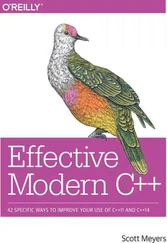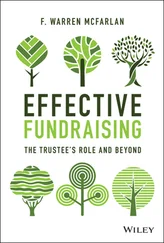Bernard C. Beins - Effective Writing in Psychology
Здесь есть возможность читать онлайн «Bernard C. Beins - Effective Writing in Psychology» — ознакомительный отрывок электронной книги совершенно бесплатно, а после прочтения отрывка купить полную версию. В некоторых случаях можно слушать аудио, скачать через торрент в формате fb2 и присутствует краткое содержание. Жанр: unrecognised, на английском языке. Описание произведения, (предисловие) а так же отзывы посетителей доступны на портале библиотеки ЛибКат.
- Название:Effective Writing in Psychology
- Автор:
- Жанр:
- Год:неизвестен
- ISBN:нет данных
- Рейтинг книги:3 / 5. Голосов: 1
-
Избранное:Добавить в избранное
- Отзывы:
-
Ваша оценка:
- 60
- 1
- 2
- 3
- 4
- 5
Effective Writing in Psychology: краткое содержание, описание и аннотация
Предлагаем к чтению аннотацию, описание, краткое содержание или предисловие (зависит от того, что написал сам автор книги «Effective Writing in Psychology»). Если вы не нашли необходимую информацию о книге — напишите в комментариях, мы постараемся отыскать её.
Effective Writing in Psychology: Papers, Posters, and Presentations
Effective Writing in Psychology's
Effective Writing in Psychology: Papers, Posters, and Presentations
Effective Writing in Psychology — читать онлайн ознакомительный отрывок
Ниже представлен текст книги, разбитый по страницам. Система сохранения места последней прочитанной страницы, позволяет с удобством читать онлайн бесплатно книгу «Effective Writing in Psychology», без необходимости каждый раз заново искать на чём Вы остановились. Поставьте закладку, и сможете в любой момент перейти на страницу, на которой закончили чтение.
Интервал:
Закладка:
Table of Contents
1 Cover
2 Title Page
3 Copyright Page
4 Dedication Page
5 Preface to the Third Edition
6 Preface to the Second Edition
7 Preface to the First Edition Organization of This Book Features Acknowledgments
8 1 Writing Professionally Introduction to Writing in Psychology How Does Professional Writing Differ From Other Kinds of Writing? Using APA Style Making a Credible Argument Different Types of Communication Effective Communication How to Begin
9 Part I: Organizing and Developing Your Ideas and Writing 2 Formulating Your Ideas Identifying Your Focal Question Locating Relevant Sources Recognizing Multiple Viewpoints Ethical Writing 3 AssessingYour Sources The Difference Between Primary, Secondary, and Tertiary Literature The Difference Between Popular and Scholarly Sources Evaluating Sources Evaluating Internet Sources 4 How to Conduct a Literature Search Understanding the Purpose of a Literature Search Understanding Library Resources Using Article Databases Using the internet Using Sources to Find Sources 5 How to Read and Summarize a Journal Article Understanding Journal Articles Overview of the Research—the Abstract Identifying the Issues—Introduction Section Understanding What Was Done—Method Section What Happened—Results Section What It Means—Discussion Section Where the Ideas Originated—References Section Figuring out What It Means 6 Organizing a Paper Organization Using the Work of Others to Support Your Argument Editing and Revising Mechanics 7 Elements of Style Recognizing the Importance of Grammar and Style Choosing Effective Wording Using Inclusive and Appropriate Language Deciding on the Use of Technical Language Avoiding Common Problems Verb Forms Spelling Specific Word Use 8 Communicating Statistics Importance of Understanding Statistics Why Do We Use Statistics? What Point Are You Trying to Make? Understanding Your Numbers Helping Readers Understand Your Statistics Differentiating Results and Interpretations
10 Part II: Preparing APA‐Style Papers 9 Writing a Thesis or a Term Paper Framework for Writing a Term Paper Developing Your Idea Organizing Your Paper Around the Central Questions Finding Different Perspectives About Your Idea Developing the Logic of Your Argument 10 The Introduction Section Introducing the Topic Different Approaches to Starting the Introduction How to Begin Reviewing What Others Have Already Done Reasons for Reviewing the Literature Clarifying Terms in the Research Introducing Your Research: Generating a Hypothesis 11 The Method Section Participants and Subjects Materials and Apparatus Procedure Design 12 The Results Section Providing a Good Ending Your Hypotheses Deciding What to Present Reporting Significant and Nonsignificant Results Marginally Significant Effects APA Style and Presentation of Your Results Creating Tables Creating Figures The Connection Between the Text and the Tables and Figures The Difference Between Results and Discussion Sections Some Final Points About Presenting Results 13 The Discussion Section Summarizing Your Results Connecting Different Aspects of Your Results Dealing With Nonsignificant Results Comparing Your Results With Those of Others State the Importance and Implications of Your Results Acknowledging the Limitations of Your Study 14 References Purpose of the References Section Citing References in the Text Order of Citations in the Reference List Using Your Word Processing Program to Create the Citation Examples of How Different Types of References Should Be Laid Out in a Reference List Examples of Different Types of Citations in the Reference List 15 Final Touches The Abstract Formatting Details
11 Part III: Communicating Beyond the Research Paper 16 Creating Poster Presentations Differentiating Visual and Written Communication Reducing the Amount of Information Visual Style Your Behavior: The Ethic of a Poster Session Creating Your Poster Using PowerPoint 17 Giving Oral Presentations The Difference Between Oral and Written English Adapting APA Style to Oral Presentations Preparing for Your Talk Creating Graphics for Your Presentation Giving the Presentation 18 Presenting Your Work on the Internet New Capabilities with Internet Publication Using a Word Processor to Create Manuscripts for the Internet Advantages of Internet Publishing Software Publishing Your Poster on the Web Uploading Your Manuscript to the Internet 19 Submitting Your Plan to an Ethics Committee Ethical Standards in Research Writing a Proposal for an Institutional Review Board for Research With Human Subjects Writing a Proposal for the Institutional Animal Care and Use Committee (IACUC) for Animal Research
12 Appendix A: Example of APA‐Style Manuscript with Common Errors
13 Appendix B: Corrected APA‐Style Manuscript
14 References
15 Author Index
16 Subject Index
17 End User License Agreement
List of Tables
1 Chapter 1 Table 1.1 Typical Sections in an APA‐Style Research Report
2 Chapter 2 Table 2.1 Different Kinds of Research Table 2.2 Nonacademic Sources of Information Related to Psychology
3 Chapter 3 Table 3.1 Logical Fallacies Table 3.2 Evaluating Internet Sources Table 3.3 Web Pages, Advocacy, and Coverage for ADHD
4 Chapter 4 Table 4.1 Conducting a Literature Search Table 4.2 Using Different Search Engine Tools Table 4.3 Strategies for a More Efficient Search in PsycINFO
5 Chapter 5Table 5.1 Important Questions to Answer from the Introduction Table 5.2 Important Questions to Answer from the Method Section Table 5.3 Important Questions to Answer from the Results Section Table 5.4 Important Questions to Answer from the Discussion Section Table 5.5 Worksheet with Important Questions to Answer when Reading a Journal Art ...
6 Chapter 6Table 6.1 Knowing Your Readers Table 6.2 Revising and Editing Activities
7 Chapter 7Table 7.1 Transitions and Their Uses Table 7.2 Apostrophe Usage When Indicating Possession Table 7.3 Frequently Misused Contractions Table 7.4 Pronouns and Antecedent References Table 7.5 Active and Passive Verbs Table 7.6 Rules for Forming Plurals Table 7.7 Guidelines for Specific Word Use in APA Style
8 Chapter 8Table 8.1 Examples of Text with and without Statistical Information.a Table 8.2 Common Research Questions and the Traditional Statistical Tests Associa ...
9 Chapter 9Table 9.1 Writing a Term Paper Table 9.2 Different Research Models Table 9.3 The Benefits of Including Different Perspectives Table 9.4 Strengthening the Logic of Your Argument
10 Chapter 11Table 11.1 Demographics of Research Participants Table 11.2 Common Elements in the Design Subsection
11 Chapter 12Table 12.1 Examples of Presentations of Descriptive Statistics Table 12.2 Format for Presenting Commonly Used Inferential Statistics Table 12.3 Some Commonly Used Symbols and Abbreviations Used in Measurement Table 12.4 Some Common Symbols Used in Presenting the Results of Statistical Test ...Table 12.5 Steps to Use to Create a Table with Word® Table 12.6 The Result: Means (and Standard Deviations) of Ratings of Jokes Accord ...Table 12.7 Specific Rules and Guidelines Commonly Used for Presenting Numbers and ...
12 Chapter 15Table 15.1 Directions for Creating the Running Head and Page Number in Word Table 15.2 Different Levels of Headings in an APA‐Style Manuscript Table 15.3 Guidelines for Capitalization in APA Style Table 15.4 Guidelines for Italics in APA Style Table 15.5 Guidelines for Abbreviations in APA Style Table 15.6 Guidelines for Creating Series in APA Style Table 15.7 Guidelines for Using Quotations in APA Style Table 15.8 Guidelines for Using Common Punctuation Marks
Читать дальшеИнтервал:
Закладка:
Похожие книги на «Effective Writing in Psychology»
Представляем Вашему вниманию похожие книги на «Effective Writing in Psychology» списком для выбора. Мы отобрали схожую по названию и смыслу литературу в надежде предоставить читателям больше вариантов отыскать новые, интересные, ещё непрочитанные произведения.
Обсуждение, отзывы о книге «Effective Writing in Psychology» и просто собственные мнения читателей. Оставьте ваши комментарии, напишите, что Вы думаете о произведении, его смысле или главных героях. Укажите что конкретно понравилось, а что нет, и почему Вы так считаете.












